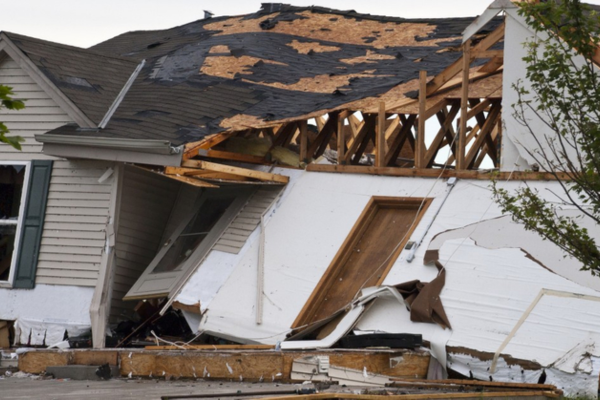Things That Could Be Damaging Your Home Right Now (Without You Knowing)

Table Of Contents
You’d think if something was wrong with your house, you’d notice. A busted pipe? Hard to miss. A cracked window? Obvious. But here’s the kicker: a lot of the worst damage doesn’t scream at you.
It sneaks in. Quiet, slow, and usually in places you’re not poking around every day—inside walls, behind cabinets, under the floors. By the time you actually see it… Well, let’s just say the repair bill won’t be fun.
And no, hidden problems don’t always come with those neat little warning signs people talk about. Sometimes you have to know what’s worth checking before it’s too late. And that is why prevention is always better than a cure!
On that note, I am here to discuss the most common home damage causes that we usually fail to notice.
Stay tuned.
What Are The Most Common Home Damage Causes?
So without wasting time, let’s check out the most common home damage causes:
1. The Silent Damage Caused by Termites:
Let’s start with termites because, honestly, they’re like the silent assassins of houses. You almost never see them until it’s way too late. Meanwhile, they’re busy chewing through beams and flooring like it’s a buffet.
And the annoying part? Most homeowners don’t have a clue until the damage is already there. Termites don’t just stop one day and say, “eh, we’re full.” Nope, they keep going until something important starts giving way.
Moreover, getting professional help with control for termites is often the only way to catch the problem before serious damage sets in.
Also, people think it’s just old, creaky houses in the woods that get termites. Not true. They’ll show up anywhere there’s warmth, a bit of dampness, and wood. Could be door frames, baseboards, or even furniture.
Little signs pop up sometimes—like weird sawdust piles, wood that sounds hollow when you tap it, or paint bubbling. Oh, and in spring, you might see swarmers (those winged ones). But if they’re flying around, the colony’s already moved in and made itself at home.
2. Leaks That Hide Behind Walls:
Water damage is another sneaky one. A tiny drip behind a wall or under a sink can go on for weeks. Meanwhile, drywall’s soaking it up, wood’s rotting, and—surprise—mold starts growing in the dark.
The tricky bit is that it doesn’t always look wet right away. You might not see anything until the wall feels soft or you catch that “ugh, what’s that smell?” mustiness. By then? The hidden stuff behind it is usually toast.
And don’t get me started on mold. It loves the same dark, damp corners, and once it spreads, it’s a pain to deal with. If you’re smart, you’ll check pipes and connections once in a while, keep an eye on your water bill (spikes = bad sign), and even stop and listen—sometimes you can literally hear a faint drip if things are quiet.
3. Rodents And Pests In The Attic Or Basement:
Rodents don’t need a grand entrance. Give ‘em a gap the size of a coin and boom, they’re in. And where do they head? Not your living room—they sneak into the attic, basement, and crawlspaces. Quiet, warm, nobody bothering them. Perfect.
Here’s the deal: rats and mice don’t just hang out. They chew wires (fire hazard right there), tear insulation to shreds, and leave droppings everywhere. Not exactly the kind of roommates you want.
Even if you don’t see them, you’ll probably notice something off. Scratching in the walls at night, tiny droppings in corners, maybe bits of shredded cardboard stuffed where it doesn’t belong. Best bet is to close up entry holes, store food so they can’t sniff it out, and if you’re in doubt, get someone to check the places you don’t go crawling into.
4. Air Leaks That Drain Energy:
This one doesn’t sound dramatic, but it hits you where it hurts—your wallet. Tiny air leaks around windows, doors, and even ductwork can quietly bleed money every single month.
The thing is, you don’t hear or see leaks. What do you notice? The AC is running longer than usual, or the heating bill is creeping up. That’s your clue.
And because the system’s working overtime, it also wears out faster. So not only are you paying more now, you’re setting yourself up for a replacement bill down the road. Quick fixes like caulk, weatherstripping, or even an energy audit can catch most of it.
5. Weak Points In The Roof:
Your roof takes a beating—wind, rain, sun, and little critters running across it. Shingles crack, flashing comes loose, and suddenly water’s sneaking in where nobody looks. If no one checks it for years, it just sits there, getting worse.
Indoors, you might see ceiling stains, peeling paint, or damp attic spots. Outside, maybe missing shingles or gutters overflowing. But here’s the catch—if you’re waiting until those signs show up, chances are the roof’s already taken a hit.
Honestly, fixing a couple of shingles early is way cheaper than replacing half the roof later. It’s just about catching it before it snowballs.
6. Pipes That Freeze Or Rust:
If you’ve lived somewhere cold, you know pipes can freeze during winter, and these are no joke. Water freezes, it expands, and—snap—your pipe’s split. Sometimes it doesn’t burst right away, but the crack’s already there waiting.
Rust is another one. Slow, sneaky, and it weakens pipes over time. By the time you actually notice water leaking, the metal’s been corroding for ages.
The headache here is that you can’t see most of your plumbing. It’s all tucked away behind walls. That’s why insulating exposed pipes and keeping an eye out for any damp patches nearby is worth it.
How To Stay Ahead Of The Most Common Home Damage Causes?
The longer hidden stuff goes unchecked, the uglier it gets. The upside? Most of it’s preventable if you’re willing to keep tabs on things.
Here are a few simple habits that help:
- Watch for signs of pests, water damage, or weird soft spots in walls/floors.
- Get a pest inspection once a year (especially if termites are a thing where you live).
- Poke around the attic and basement a couple of times a year—droppings, nests, leaks, all that.
- Keep an eye on your bills. If they suddenly jump, something’s probably off.
- After heavy storms, or at least every so often, have someone check the roof.
The idea’s simple: little fixes now save you from big repair bills later.
Dealing With Home Damage Causes: What To Remember?
Not everything in a house announces itself with a bang. Some of the worst damage just creeps in while you’re not paying attention. Termites, slow leaks, rodents, roof trouble, even air sneaking out—all of it can chip away at your place without you knowing.
The trick is to stay a little alert – the most common home damage causes are just lurking in plain sight. Walk around, notice small changes, and don’t ignore that nagging feeling when something seems “off.” Getting things checked regularly keeps you ahead of the curve. A strong, safe home doesn’t just happen—it’s built by noticing the stuff you usually overlook.
You May Also Like

October 31, 2025
How To Choose Flooring That Looks Good And Prevents Falls

August 8, 2025
Planning A Weekend Getaway: Tips For Planning A Nice Trip

August 20, 2025






















